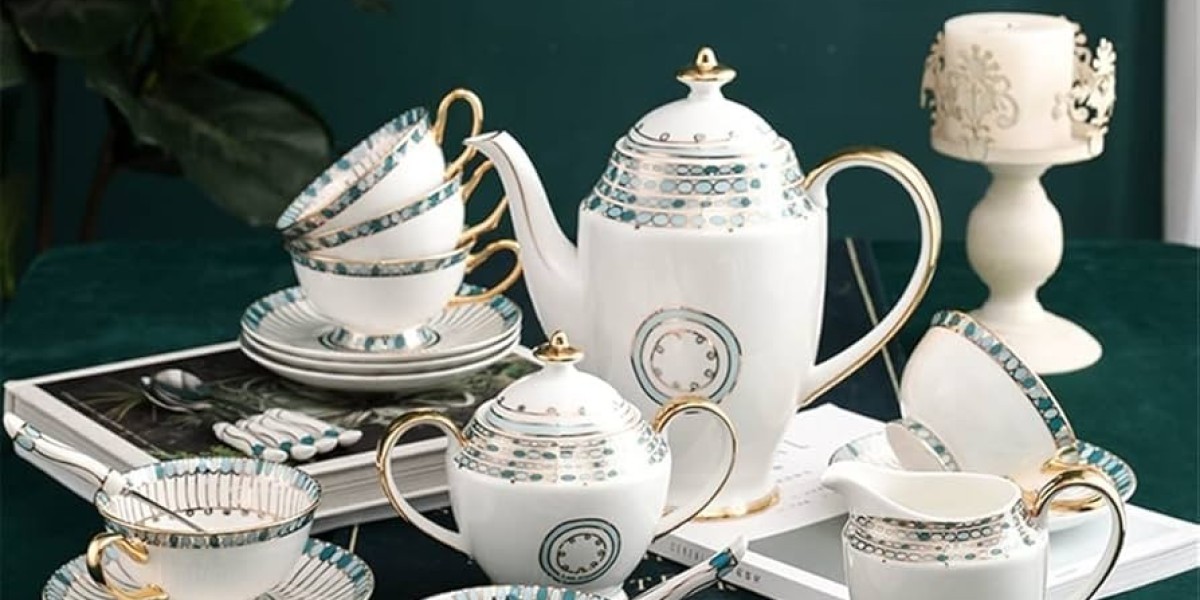Porcelain service sets have long been prized for their delicate beauty and practicality. Originating in China over a thousand years ago, these porcelain pieces have evolved into the luxurious tableware we know today. Porcelain service sets include various items designed for serving food and beverages, from tea cups and saucers to complete dinnerware, each reflecting a blend of cultural heritage, artisanal craftsmanship, and modern aesthetic preferences. This article explores the distinct features of porcelain service sets, their history, variations, and what makes them a cherished choice for both formal gatherings and everyday use.
The Rich History of Porcelain Service Sets
The origins of porcelain date back to the Tang Dynasty in China (618-907 AD), where artisans discovered that mixing kaolin clay with other minerals produced a white, glass-like ceramic after high-temperature firing. This "white gold," as it was sometimes called, became highly valued across the world. European demand was so strong that countries like Germany and England began establishing their own porcelain manufactories in the 18th century to reduce dependency on Chinese imports.
Over centuries, porcelain service sets transformed from simple tableware to symbols of refinement and status. European royal courts, such as those in France, Prussia, and Russia, commissioned elaborate porcelain sets, often decorated with intricate hand-painted designs and gilded edges. Today, companies like Meissen, Royal Worcester, and Wedgwood continue to uphold these traditions, creating pieces that blend historic artistry with contemporary design.
Key Features of Porcelain Service Sets
Material Quality: Porcelain service sets are distinguished by their translucency, durability, and smooth, non-porous surfaces. True porcelain is strong despite its thin and delicate appearance, making it both practical and elegant.
Heat Retention and Safety: Porcelain maintains heat well, which is especially valued for serving warm dishes or hot beverages. Additionally, it is non-toxic, lead-free, and hypoallergenic, making it a safe choice for serving food.
Versatile Designs: Modern porcelain service sets range from minimalist designs with subtle details to richly adorned sets inspired by cultural motifs, including floral, geometric, and classic patterns. The flexibility in style makes porcelain service sets suitable for diverse occasions and interiors.
Ease of Maintenance: Most high-quality porcelain service sets are dishwasher- and microwave-safe, which adds a practical edge to their luxurious appeal. However, hand-painted or gilded pieces often require more delicate care.
Types of Porcelain Service Sets
Porcelain service sets can include a variety of pieces, each designed for specific serving needs:
Tea and Coffee Sets: These often include teapots, coffee pots, cups, saucers, creamers, and sugar bowls. Porcelain tea sets, particularly, have a revered history in Asia, where tea culture is deeply embedded in society.
Dinnerware Sets: Complete dinnerware sets include dinner plates, salad plates, soup bowls, and sometimes additional serving platters and gravy boats. Such sets are versatile and are often chosen to match a formal dining room's decor.
Dessert Sets: Smaller sets featuring dessert plates, serving bowls, and cake stands, designed to enhance the presentation of sweets and pastries, add a touch of elegance to special occasions.
Specialty Sets: These may include items like sake sets, sushi trays, or soup tureens, each catering to specific cuisines and dining traditions.
Why Porcelain Service Sets Remain a Top Choice
Porcelain service sets have a unique blend of beauty and resilience that makes them a preferred choice over other materials, like stoneware or glass. The material itself is known for being highly durable, chip-resistant, and refined, making it suitable for heirloom-quality tableware that can be passed down through generations. Additionally, porcelain has a neutral white base that allows for a variety of glazes and designs, adding versatility to both casual and formal table settings.
The demand for porcelain service sets also owes much to their ability to hold cultural and sentimental value. Many families treasure their porcelain sets as valuable keepsakes, with some sets passed down across generations. In modern homes, they continue to be popular for their blend of artistry and practicality, striking a balance between tradition and functionality.
Collecting and Caring for Porcelain Service Sets
Collectors often seek porcelain sets from renowned manufactories, such as Limoges from France or Royal Copenhagen from Denmark, which are known for their exquisite craftsmanship and signature designs. For those interested in collecting, focusing on specific styles, time periods, or makers can make the pursuit even more rewarding.
Caring for porcelain service sets requires gentle handling to prevent chipping or damage to hand-painted surfaces. Generally, it is recommended to avoid rapid temperature changes, as this can cause cracking. While many modern porcelain pieces are dishwasher-safe, hand washing is preferred for antique or elaborately decorated items. By following these care guidelines, porcelain pieces can remain in pristine condition for many years.
Conclusion: A Timeless Elegance
Porcelain service sets remain an enduring choice for those who appreciate the blend of art, culture, and practicality. Whether used daily or reserved for special gatherings, these sets bring elegance and sophistication to the dining experience. From their rich historical roots to their refined designs, porcelain service sets continue to embody a timeless charm, making them a valuable addition to any table setting and a cherished item in homes worldwide.



